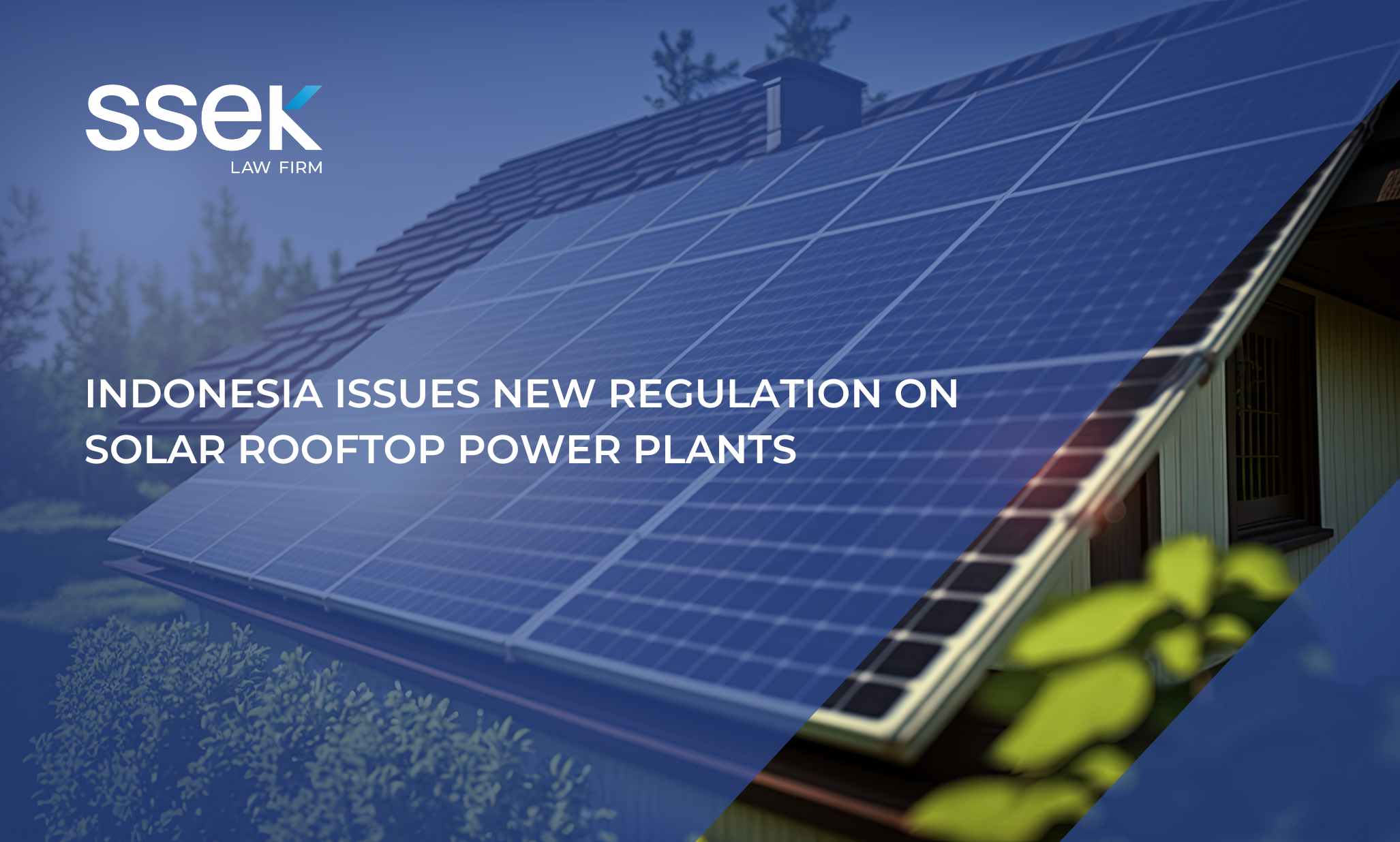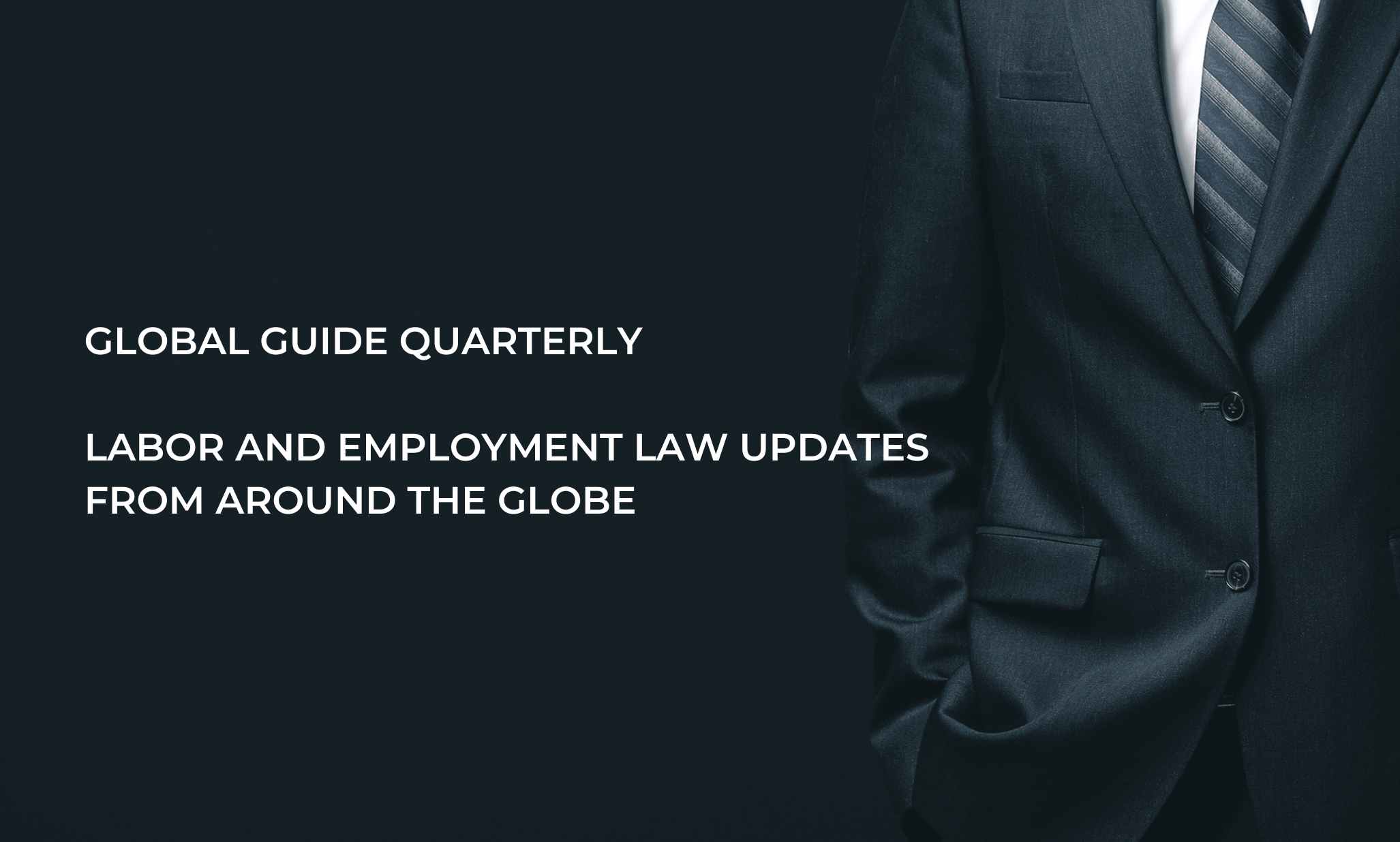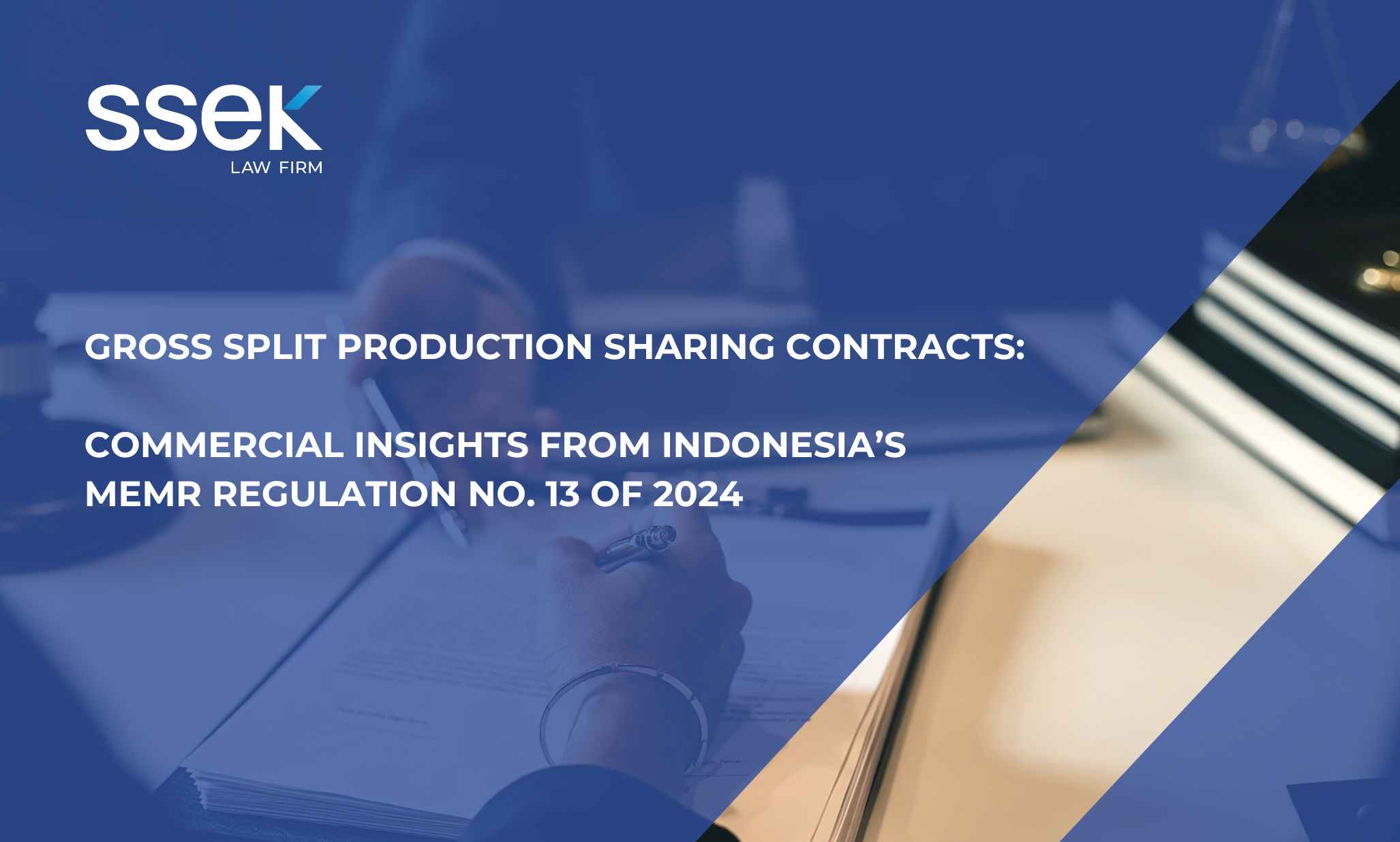


In an effort to achieve a new and renewable energy mix of 23% by 2025, the Government of Indonesia is fast-tracking solar energy development with the introduction of a new regulation on rooftop solar power plants.
Regulations on rooftop solar power plants for households and commercial and industrial customers have drastically evolved since 2017. Initially, Minister of Energy and Mineral Resources (“MEMR”) Regulation No. 1 of 2017 on the Parallel Operation of Power Plants with PT Perusahaan Listrik Negara (Persero)’s Grid allowed the interconnection with PLN’s grid for backup and supplementary power.
Subsequently, MEMR Regulation No. 49 of 2018 on the Utilization of Rooftop Solar-Power Generation by PLN Customers (“MEMR Reg 49/2018”) was enacted and amended twice in 2019. The most recent amendment is MEMR Regulation No. 16 of 2019, which permits installation of up to 100% of installed PLN capacity and export of up to 65% against the utility bill.
MEMR Regulation No. 26 of 2021 on Rooftop Solar Power Plants Connected to the Power Grid of the Holder of a Business License for Public Power Supply (Izin Usaha Penyediaan Tenaga Listrik untuk Kepentingan Umum or “IUPTLU”) ("MEMR Reg 26/2021”) also adopted a 100% installation quota, as previously provided under MEMR Reg 49/2018, while increasing the electricity export allowance to 100%. The implementation of MEMR Reg 26/2021 received a mixed response from market players and stakeholders in Indonesia, primarily due to difficulties in obtaining the necessary approvals.
Now a new regulation on rooftop solar power plants has been enacted with the aim of finally realizing the untapped potential for solar power in Indonesia.
MEMR Regulation No. 2 of 2024 on Rooftop Solar-Power Plants Connected to the Grid of IUPTLU Holders ("MEMR Reg 2/2024”) fully revokes MEMR Reg 26/2021 and revokes provisions in MEMR Regulation No. 11 of 2021 on the Implementation of Electricity Business ("MEMR Reg. 11/2021”) on the licensing and requirements for captive power.
The key provisions of MEMR Reg 2/2024 include (i) quota system for IUPTLU holders, (ii) removal of capacity charges and net-metering schemes, (iii) new application procedures, and (iv) carbon credit entitlements.
Quota System for IUPTLU Holders
MEMR Reg. 2/2024 introduces a quota system for IUPTLU holders. License holders are required to prepare a five-year quota plan for the development of solar rooftop within their business area, with due observance of (i) national energy policy; (ii) their Electricity Supply Business Plan (Rencana Usaha Penyediaan Tenaga Listrik or “RUPTL”); and (iii) the reliability of the relevant electricity system in accordance with its grid code.
The rooftop quota plan must be submitted to the MEMR’s Director General of Electricity, copied to the Director General of New and Renewable Energy and Energy Conservation, for approval.
In addition, clustering, a system within the customer service unit of IUPTLU holders, is now required. This system consolidates development quotas for rooftop solar power plants. Quota adjustments are allowed upon approval by the Director General of Electricity copied to the Director General of New and Renewable Energy and Energy Conservation, and excess quotas can be carried over to the next year.
All prospective customers must apply to the IUPTLU holder for the construction and installation of rooftop solar power plants, with a copy to both the Director General of New and Renewable Energy and Energy Conservation and the Director General of Electricity at the MEMR. We detail the application process further below.
This development quota system replaces the previously imposed system of a maximum allowed capacity of 100% of the connected power to PLN’s grid in force under previous rooftop regulatory regimes. Now, with the quota system, the installed capacity for rooftop systems will be determined by the relevant IUPTLU holder.
Removal of Capacity Charges and Net Metering Schemes
Another critical change under MEMR Reg. 2/2024 is the removal of the net metering scheme for solar rooftops. Previously, MEMR Reg. 26/2021 used an export-import kWh meter, but MEMR Reg. 2/2024 replaces this with an advanced meter, rendering the provisions for an export-import kWh meter obsolete. The advanced meter must be supplied, installed, and paid for by IUPTLU holders for prospective solar rooftop customers.
Existing solar rooftop customers using the pre-paid method will have to switch over to the post-paid mechanism, which is the only payment method accepted under the new regulation. The switch of payment method will be incorporated in the solar rooftop application and approved by the IUPTLU holder. Consequently, customers can no longer set off their electricity bills with the electricity generated from their rooftop systems, as was previously allowed.
Other than the advanced meter, the parallel operation costs (capacity charge and emergency energy charge) are waived for customers of all tariff groups who install solar rooftop systems. Previously, MEMR Reg. 26/2021 provided that commercial and industrial customers who installed solar rooftop systems were still required to pay a monthly capacity charge. This change is intended to balance out the elimination of net metering because under MEMR Reg. 2/2024, excess power from the rooftop system that enters the IUPTLU holder's grid will not be taken into account in determining the electricity bill of the customer.
New Application Procedures
Under MEMR Reg. 2/2024, applications for installing solar rooftop systems can only be submitted from January to July. The applicant will submit the standard application form to the relevant IUPTLU holder with a copy to the Director General of New and Renewable Energy and Energy Conservation. The IUTPLU holder will verify the submitted application.
If the rooftop capacity is more than 500 kW in one system, the relevant applicant must obtain a Business License for Individual Power Supply (Izin Usaha Penyediaan Tenaga Listrik untuk Kepentingan Sendiri or “IUPTLS”). If the rooftop capacity is less than 500 kW in one system, the applicant must submit a report to the MEMR or the relevant governor. The application procedures and the requirements to obtain an IUPTLS and submit reports are provided in MEMR Regulation No. 11 of 2021.
After the applicant (i) obtains the approval from the IUPTLU holder and (ii) obtains the IUPTLS or submits the report, the applicant can begin the construction and installation of the solar rooftop system, which work shall be conducted by business actors registered with the Directorate General of Electricity for the relevant business area. Such business actors may include (i) state-owned enterprises, (ii) regionally owned enterprises, (iii) private enterprises, (iv) cooperatives, and (v) non-governmental organizations.
After the solar rooftop system is installed, the technical inspection agencies will inspect the system and issue a Certificate of Worthiness ("SLO”).
Administrative Sanctions
MEMR Reg. 2/2024 clarifies that administrative sanctions in the form of written warnings will apply to various stakeholders including IUPTLU holders, customers, and business entities that do not fulfill their respective requirements as regulated under this law.
If customers begin operating the solar rooftop system prior to the approval of the IUPTLU holder, they may be sanctioned with a temporary disconnection from the IUPTLU holder’s network and a penalty based on the calculation of total inverter capacity multiplied by 240 hours multiplied by the electricity tariff, as contained in a notification letter issued by the IUPTLU Holder.
Carbon Trading Scheme
MEMR Reg. 26/2021 stated that one of the objectives of the use of solar rooftop systems was the reduction of greenhouse gas emissions, allowing participation in carbon trading. MEMR Reg. 2/2024 echoes these provisions and further stipulates that the carbon economic value (Nilai Ekonomi Karbon or “NEK”) shall be determined in accordance with prevailing laws and regulations.
It must be noted that MEMR Reg. 2/2024 provides that in the absence of such laws and regulations, the carbon credit will belong to the Government of Indonesia. The government’s entitlement to the carbon credits further reduces the economic incentives for the installation of rooftop systems, which under previous regimes used to be contractually agreed between customers and the rooftop system equipment providers.
Conclusion: Developments and Drawbacks
MEMR Reg. 2/2024 introduces changes such as the development quota system, which aims to balance customer interest and the economic concerns of IUPTLU holders. However, it eliminates the net-metering scheme, hindering incentives for household solar rooftop systems. The allocation of quotas lacks clarity, with a lengthy evaluation interval of five years. The limited application period from January to July poses challenges, compounded by vague approval timelines. Additionally, the default carbon credit entitlement to the Government of Indonesia disincentivizes customers and providers.
It is hoped that future regulations will continue the move toward a system that is fair to all stakeholders involved, parallel with the realization of Indonesia’s goal to accelerate the generation of electricity from renewables.
This publication is intended for informational purposes only and does not constitute legal advice. Any reliance on the material contained herein is at the user’s own risk. All SSEK publications are copyrighted and may not be reproduced without the express written consent of SSEK.









